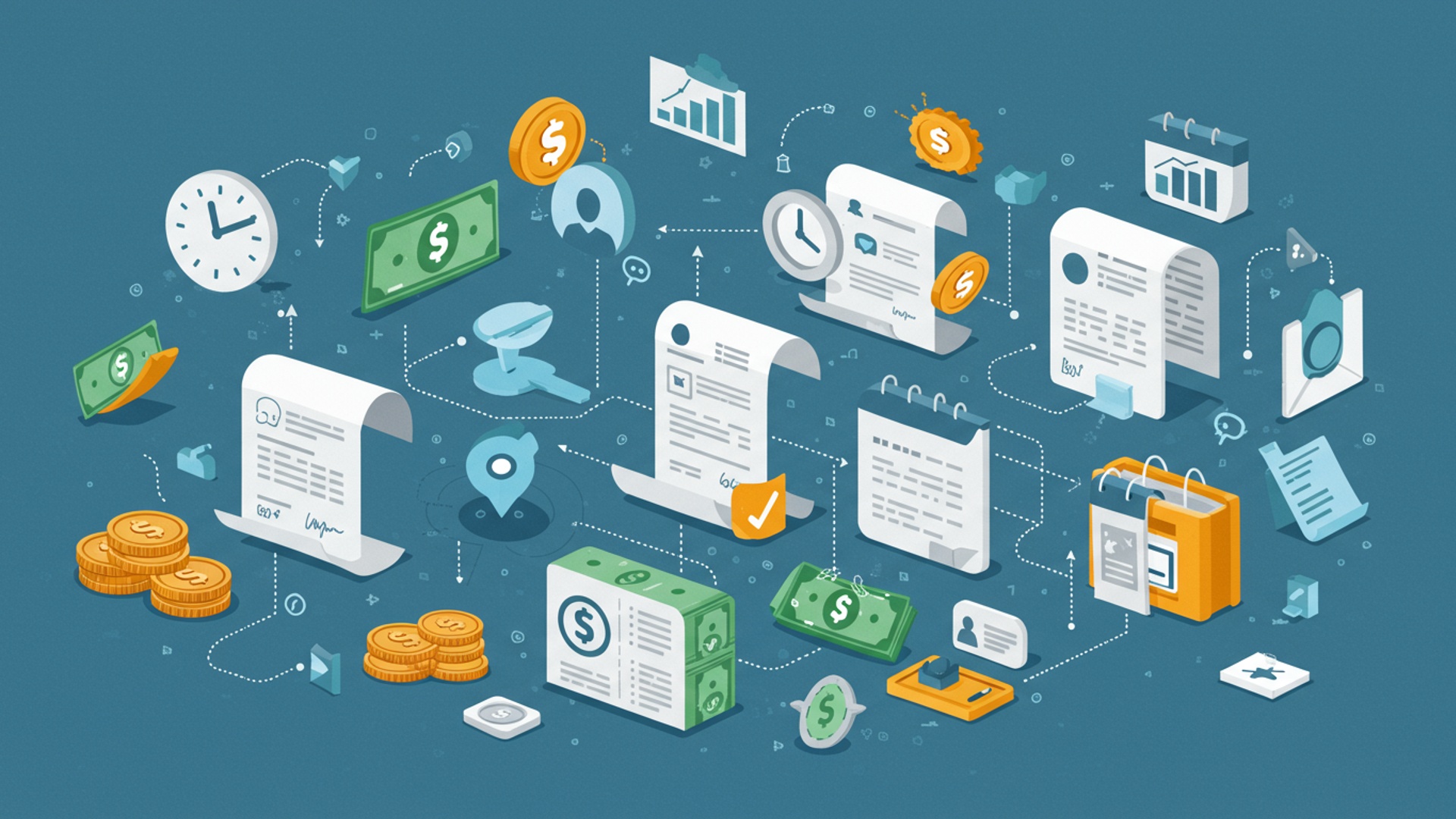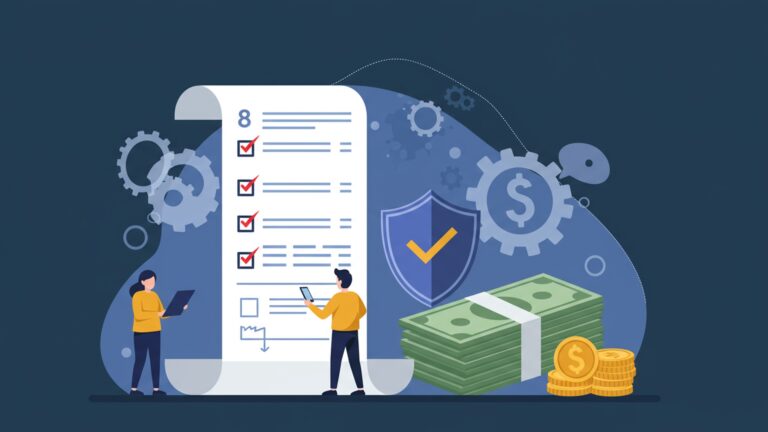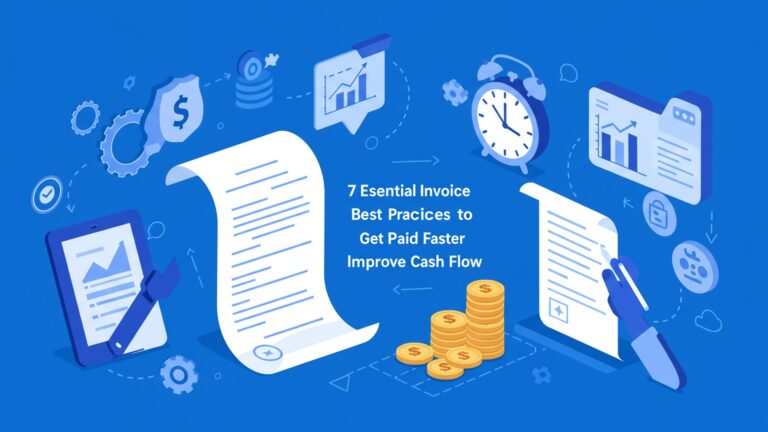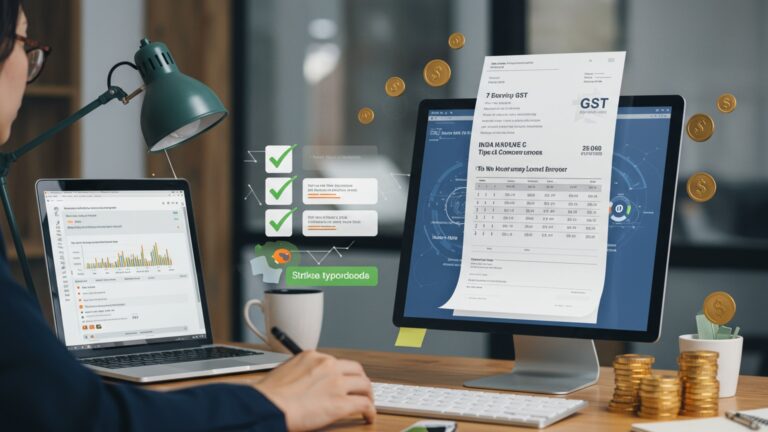7 Effective Strategies to Avoid Late Payments and Improve Your Cash Flow
The pervasive issue of late payments continues to be a significant impediment to business liquidity, transforming anticipated revenue into a critical operational constraint, especially amidst current inflationary pressures and supply chain disruptions. Proactive implementation of robust late payment solutions is no longer a luxury but a strategic imperative for maintaining financial resilience and fostering growth. Businesses frequently experience a tangible drain on working capital, impacting payroll, inventory management. even investment in innovation. Moving beyond traditional reactive chasing, effective strategies involve leveraging data-driven insights to predict potential delays, optimizing payment infrastructure. establishing clear, enforceable financial policies. This shift ensures a predictable cash flow, essential for navigating today’s dynamic economic landscape.

The Hidden Cost of Late Payments on Your Cash Flow
Understanding the detrimental impact of late payments is the first step toward safeguarding your business’s financial health. A late payment isn’t just an inconvenience; it’s a direct threat to your cash flow, which is the lifeblood of any business. Cash flow refers to the net amount of cash and cash equivalents being transferred into and out of a business. Positive cash flow means more money is coming in than going out, allowing for growth, investment. operational stability. Conversely, negative cash flow can lead to operational struggles, missed opportunities. even business failure.
When clients or customers delay payments, your expected revenue is held up. This can create a domino effect:
- Operational Disruptions
- Stifled Growth
- Increased Stress and Administrative Burden
- Damaged Supplier Relationships
You might struggle to pay your own suppliers, employees, or rent on time.
Funds earmarked for expansion, marketing, or new product development become unavailable.
Chasing payments consumes valuable time and resources that could be better spent elsewhere.
If you can’t pay your suppliers promptly, your own reputation can suffer, potentially leading to less favorable terms or even a loss of critical partnerships.
Consider a small marketing agency, “Creative Spark,” that relies on client payments to cover payroll and project expenses. If a major client, responsible for 30% of their monthly income, consistently pays 45 days late instead of the agreed-upon 30, Creative Spark might face a shortfall. They might have to delay paying their freelance designers, potentially losing talented individuals, or defer purchasing new software that could enhance their services. This real-world scenario highlights why effective late payment solutions are not just about recovering money. about maintaining operational fluidity and strategic growth.
Strategy 1: Clear Payment Terms from the Outset
One of the most fundamental and effective late payment solutions begins before any work is even done: establishing crystal-clear payment terms. Ambiguity is the enemy of timely payments. From the moment you engage with a client, ensure that all payment expectations are explicitly stated, understood. agreed upon in writing.
Your payment terms should be comprehensive and cover the following key aspects:
- Due Date
- Payment Schedule
- Accepted Payment Methods
- Late Payment Penalties
- Dispute Resolution Process
Clearly state when payment is expected (e. g. , “Net 30,” “Due upon receipt,” “Within 14 days of invoice date”).
If it’s a project with milestones, outline specific payment points (e. g. , “50% upfront, 25% at mid-project, 25% upon completion”).
List all the ways clients can pay you (e. g. , bank transfer, credit card, online payment gateway).
Explicitly state any fees or interest that will be applied to overdue payments. This acts as a deterrent and provides a legitimate basis for seeking additional compensation if delays occur.
Briefly outline how payment disputes will be handled.
These terms should be included in your contracts, proposals. on every single invoice. During initial client discussions, verbally walk through these terms to ensure mutual understanding. A common mistake businesses make is assuming clients read the fine print. Proactive communication minimizes misunderstandings and sets the stage for a professional relationship where financial obligations are respected. For instance, a consulting firm might include a clause like: “Payment is due within 15 days of the invoice date. A late fee of 1. 5% per month (18% per annum) will be applied to all outstanding balances after the due date.”
Strategy 2: Implement a Robust Invoicing System
An efficient and professional invoicing system is another cornerstone of effective late payment solutions. Invoices are not merely requests for payment; they are formal documents that solidify the transaction and prompt action. A poorly constructed or delayed invoice can easily lead to payment delays.
A robust invoicing system ensures that invoices are:
- Accurate
- Clear and Detailed
- Timely
- Professional
Double-check all details, including client name, address, services rendered, quantities, rates. total amount. Errors can be a legitimate reason for delayed payment as clients will need to request corrections.
Break down services or products provided. Use clear, concise language. A client should be able to instantly comprehend what they are paying for.
Send invoices immediately after work is completed or milestones are reached. Delaying invoice submission only delays your payment.
Use a consistent, branded template. This reinforces your professional image and makes the invoice easily recognizable.
Many businesses today leverage accounting software like QuickBooks, Xero, or FreshBooks. These tools allow for the creation of professional invoices with customizable templates, automate the sending process. track the status of each invoice. This dramatically reduces the administrative burden and provides real-time visibility into your accounts receivable.
Here’s an example of a clear invoice line item:
Description: Website Design - Homepage & 3 Interior Pages
Quantity: 1
Unit Price: $2,500. 00
Amount: $2,500. 00
By providing such detail, clients are less likely to query the charges, streamlining the payment process and serving as a proactive measure among late payment solutions.
Strategy 3: Proactive Communication and Follow-ups
Even with clear terms and impeccable invoices, some payments might still be delayed. This is where proactive and consistent communication becomes a powerful strategy. The key is to be persistent but professional, avoiding an aggressive tone that could damage client relationships.
Effective communication involves several stages:
- Pre-Due Date Reminders
- On-Due Date Reminders
- Post-Due Date Follow-ups
Send a friendly reminder a few days before the invoice is due. This can be an automated email from your accounting software. It’s a gentle nudge that can prevent a late payment before it even happens.
If payment hasn’t been received by the due date, send another polite email. Assume good intent – perhaps they simply forgot.
If payment is overdue, escalate the follow-up. Start with an email, then a phone call if there’s no response. Reference the original invoice and the agreed-upon terms.
When making contact, always be prepared with the invoice details and any relevant contract terms. The goal is to comprehend the reason for the delay and find a solution. Is there a problem with the service? Did the invoice go to the wrong department? Is there a temporary financial issue? Understanding the root cause can help you tailor your approach.
Here’s a template for a polite follow-up email for an overdue invoice:
Subject: Gentle Reminder: Invoice [Invoice Number] - Overdue Dear [Client Name], Hope you're having a good week. This is a friendly reminder that Invoice [Invoice Number] for [Service/Product] with an amount of [Amount] was due on [Due Date]. Our records indicate that this payment is still outstanding. We interpret that sometimes things can slip through the cracks, so we wanted to reach out. Please let us know if you require another copy of the invoice or have any questions regarding the payment. You can make a payment via [Payment Method 1] or [Payment Method 2]. Thank you for your prompt attention to this matter. Best regards, [Your Name/Company Name]
[Contact data]
This systematic approach to follow-up significantly increases the likelihood of receiving payment and is a crucial component of any comprehensive late payment solutions strategy.
Strategy 4: Offer Multiple, Convenient Payment Options
In today’s digital age, convenience is king. Limiting your clients to only one or two payment methods can inadvertently create barriers to timely payment. Offering a variety of secure and accessible payment options is a practical strategy to improve your cash flow and reduce late payments.
Consider integrating the following payment methods:
- Bank Transfers (ACH/EFT)
- Credit/Debit Cards
- Online Payment Gateways
- Digital Wallets
Often preferred for larger sums, these are typically low-cost for businesses.
Widely used and convenient, though they involve processing fees.
Services like PayPal, Stripe, Square, or others allow clients to pay quickly and securely online, often directly from the invoice.
Options like Apple Pay or Google Pay can be integrated for mobile-savvy clients.
The more options you provide, the easier it is for clients to pay using their preferred method, removing one potential excuse for delay. Many clients appreciate the flexibility, especially if they have specific accounting systems or internal processes. For example, a client who primarily uses a corporate credit card for all vendor payments might be delayed if your only option is a bank transfer, as it requires a different internal process.
Here’s a comparison of common payment options:
| Payment Option | Pros | Cons | Best For |
|---|---|---|---|
| Bank Transfer (ACH/EFT) | Lower transaction fees, secure for large amounts. | Can be slower to process, less immediate confirmation. | Larger B2B transactions, recurring payments. |
| Credit/Debit Card | Instant payment, highly convenient for payers, widely accepted. | Higher transaction fees (2-3. 5% typically). | Smaller to medium transactions, immediate payment. |
| Online Payment Gateways (e. g. , Stripe, PayPal) | Easy integration with invoices, automated, secure. | Transaction fees, can have chargeback risks. | Online businesses, services, quick payments. |
| Cheque | Traditional, no processing fees for sender. | Slow to clear, prone to postal delays, decreasing usage. | Specific B2B scenarios where electronic isn’t an option. |
By making payment as frictionless as possible, you significantly reduce the chances of late payments, enhancing the effectiveness of your overall late payment solutions strategy.
Strategy 5: Incentivize Early Payments and Penalize Late Ones
Sometimes, a little nudge, either positive or negative, is all it takes to encourage timely payments. This strategy involves both rewarding clients who pay promptly and clearly enforcing consequences for those who do not.
Offering a small discount for early payment can be a highly effective motivator. For example, “2% off if paid within 10 days” (often written as “2/10 Net 30”). While you forgo a small percentage of the invoice amount, the benefit of receiving cash sooner can outweigh this cost, especially if you have immediate operational needs or can reinvest the funds. This strategy is particularly useful for businesses with high-value invoices where even a small discount is appealing to the client.
A construction company, for instance, might offer a 1% discount on a $50,000 progress payment if it’s settled within 7 days, instead of the standard 30. Saving $500 can be a strong incentive for the client. the construction company gets crucial funds for its next phase of work.
Just as essential as incentives are clearly communicated and enforced late payment penalties. As discussed in Strategy 1, these should be explicitly stated in your terms and conditions. Common penalties include:
- Fixed Late Fees
- Interest Charges
- Suspension of Services
A flat charge applied after the due date.
A percentage of the outstanding balance applied for each period the payment is late (e. g. , 1. 5% per month).
For ongoing projects, you might state that work will be paused until outstanding invoices are settled.
It’s crucial to be consistent in applying these penalties. If you state you will charge a late fee but never do, clients will learn that your terms are not strictly enforced. But, be mindful of local regulations regarding maximum allowable interest rates on overdue accounts. For example, in many jurisdictions, there are legal limits on the annual interest rate you can charge. Always ensure your late fee policies comply with the law. This dual approach of reward and consequence provides a comprehensive framework for late payment solutions.
Strategy 6: Leverage Technology for Automation and Tracking
In the modern business landscape, technology is arguably one of the most powerful late payment solutions. Manual processes for invoicing, tracking. follow-ups are not only time-consuming but also prone to human error. Automation can streamline your entire accounts receivable process, making it more efficient and effective.
Key technological tools and features include:
- Accounting Software (e. g. , QuickBooks, Xero, Sage)
- Automated Reminders
- CRM Systems (Customer Relationship Management)
- Online Payment Gateways (as mentioned in Strategy 4)
- Reporting and Analytics
These platforms are essential for creating professional invoices, tracking payment statuses (paid, unpaid, overdue). generating financial reports. They provide a centralized dashboard for all financial transactions.
Most accounting software allows you to schedule and send automated email reminders before an invoice is due, on the due date. at various intervals after it becomes overdue. This ensures consistency and frees up your time.
While primarily for sales and marketing, a CRM can integrate with your accounting software to provide a holistic view of a client, including their payment history. This can inform your approach to follow-ups.
Integrating these directly into your invoices allows clients to click a button and pay instantly, significantly reducing friction.
Technology provides insights into payment trends. You can identify which clients are consistently late, which services have longer payment cycles. calculate your average days sales outstanding (DSO). This data is invaluable for refining your strategies.
For instance, an e-commerce business using Shopify can integrate with accounting software that automatically generates invoices upon order fulfillment and sends automated payment reminders for B2B accounts. This significantly reduces manual effort and ensures a consistent approach to chasing payments. Leveraging these tools transforms the daunting task of managing receivables into a systematic, less burdensome process, making them indispensable late payment solutions.
Strategy 7: Build Strong Client Relationships
While processes, technology. penalties are crucial, never underestimate the power of strong client relationships as a foundational element of late payment solutions. , you’re dealing with people. trust and mutual respect can significantly influence payment behavior.
How does relationship building impact payments?
- Open Communication
- Prioritization
- Value Perception
- Personal Anecdote
Clients who trust you are more likely to communicate if they foresee a payment issue. They might reach out to explain a delay or request a payment plan, rather than simply ignoring an overdue invoice.
In times of financial constraint, clients often prioritize paying vendors with whom they have a good relationship and rely on for ongoing services.
When clients feel they are receiving excellent service and value, they are more inclined to ensure your invoices are paid promptly. They see you as a partner, not just a vendor.
“Early in my career, I had a client who was consistently 10-15 days late. Instead of just sending stern reminders, I scheduled a casual call to check in on the project and their overall satisfaction. During the conversation, I gently brought up the payment schedule. It turned out their internal approval process had a bottleneck. By understanding their challenge and offering to send invoices earlier in their cycle, we resolved the issue. They became one of my most reliable payers, simply because I showed understanding and worked with them.”
To foster strong relationships:
- Provide Excellent Service
- Be Responsive
- Maintain Regular Contact
- Be Empathetic
Exceed expectations in your core offering.
Address client queries and concerns promptly.
Don’t just communicate when payment is due.
If a client faces a genuine temporary financial hardship, explore flexible payment arrangements rather than immediately resorting to harsh measures. A short-term concession might secure a long-term client.
Ultimately, a robust relationship can transform a transactional interaction into a partnership, where both parties are invested in each other’s success, making the adoption of formal late payment solutions less frequent and more effective when needed.
Conclusion
Successfully navigating the challenge of late payments isn’t about magic; it’s about consistent, proactive effort. I’ve learned that implementing clear payment terms upfront, like offering a small early-bird discount (even 1-2%) for immediate payment or leveraging automated reminders, dramatically shifts client behavior. It’s about setting expectations and making it easy for customers to pay, not just chasing them down. In today’s digital economy, integrating robust POS and billing software isn’t just a convenience; it’s a strategic imperative for real-time tracking and timely invoicing. Think of it as your digital safety net, constantly monitoring and prompting, freeing you to focus on growth rather than administrative headaches. By embracing these strategies, you’re not just improving your cash flow; you’re building a more resilient, predictable business foundation. Take charge of your financial future today – your business deserves that stability and the peace of mind it brings.
More Articles
How to Master Billing and POS Software for Efficient Retail Management
Learn 9 Practical Strategies to Streamline Billing Process and Boost Business Efficiency
10 Essential Tips to Prevent Billing Errors and Save Your Business Money
How to Streamline Billing and POS Software for Efficient Sales and Inventory Management
A Complete Guide to Choosing the Best POS Software for Retail
FAQs
What’s the most crucial step I can take to prevent customers from paying late?
The absolute best thing you can do is to set crystal-clear payment terms right from the get-go. Make sure your invoices are detailed, easy to interpret. always sent out super promptly. Good communication early on is key!
Besides clear terms, are there any proactive things I can do before a payment even becomes late?
Definitely! Consider offering small early payment incentives, like a tiny discount for settling up quickly. It also helps to do a quick credit check on new clients and send friendly payment reminders a few days before the due date as a gentle nudge.
Okay, so a payment is late. What’s my immediate next move?
Don’t just sit on it! Follow up right away with a polite but firm reminder. Often, a quick phone call can get things sorted faster than a chain of emails. It’s smart to have a clear, escalating collection process ready to go.
How do these strategies actually help my cash flow directly?
By cutting down on late payments, you ensure money comes into your business when you expect it. This predictable inflow means you’ll have the funds ready for operations, investments. expenses without any stressful gaps, significantly improving your overall cash flow stability.
Can technology lend a hand in managing this whole late payment situation better?
Absolutely! Using modern accounting software or invoicing tools can automate sending reminders, keep track of all your outstanding invoices. even give you insights into how quickly different customers tend to pay. It’s a huge time-saver and makes your process much more efficient.
I don’t want to upset my clients. How do I chase payments without damaging those vital relationships?
It’s all about your approach and consistency. Always be polite, professional. stick to the facts. Frame your reminders as helpful nudges rather than accusations. Building trust through good communication throughout the entire project also makes these conversations much easier.
If there’s just one single piece of advice you’d give to improve on this, what would it be?
Make sure you send your invoices immediately upon completing the work or delivering the product. The longer you wait to send that invoice, the longer it will inevitably take for you to get paid. Prompt invoicing sets a strong expectation for prompt payment.






